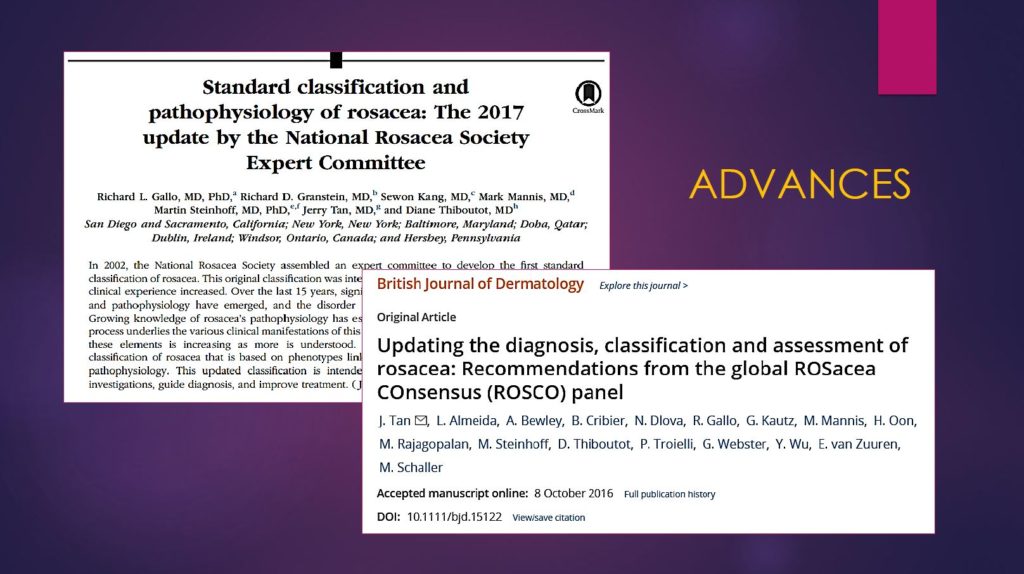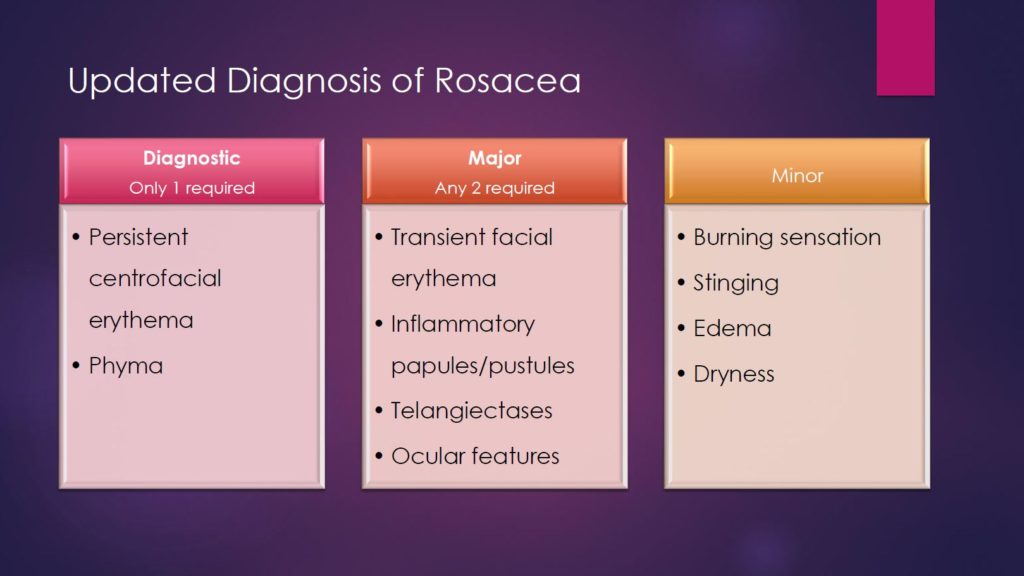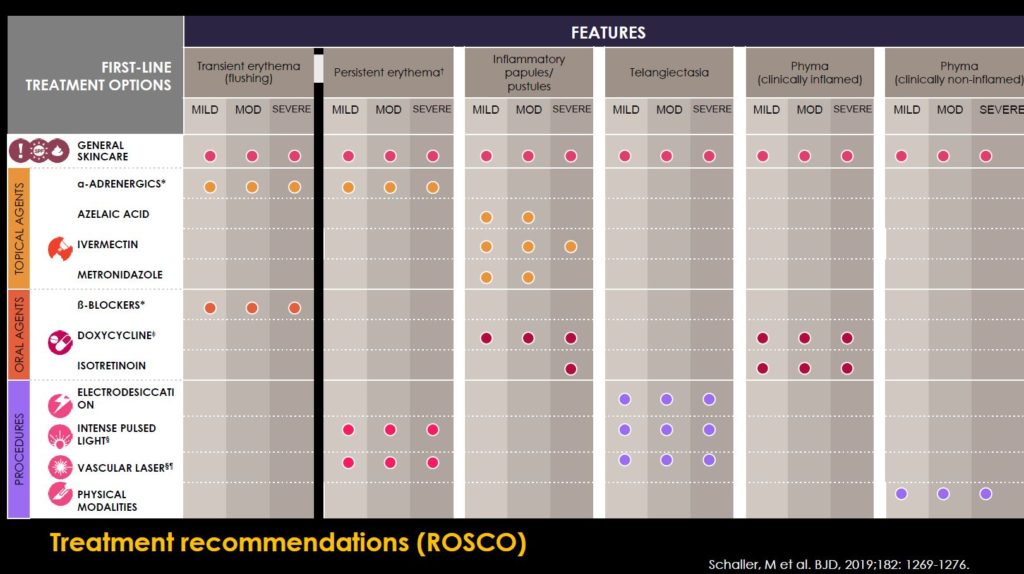An Update on Diagnosis and Management of Rosacea
Declaration: Dr Tan is a member of the expert committee of the National Rosacea Society and the chair of the global rosacea study committee (ROSC0). His conflicts of interest with industry as an advisor, consultant and speaker are listed on this slide:

Rosacea is a chronic facial condition that affects about 1 and 20 adults.
People with rosacea may have facial redness, flushing, pimples (otherwise called papules/pustules), skin thickening (known as phyma), eye involvement and sensations of facial stinging, burning, pain and itching.
Recently, my colleagues and I updated the diagnostic criteria and classification of rosacea. This was needed to increase accuracy, simplicity, and to reduce confusion.

Rosacea is diagnosed by expert assessment, not by blood tests.
Diagnosis is made if patients present with:
- Either of the following diagnostic features:
- Persistent central facial redness or
- Phyma (irregular skin thickening)
- Any 2 major features:
- flushing or transient facial erythema
- pimples (papules/pustules)
- prominent skin blood vessels (telangiectases)
- eye involvement
- minor features are not diagnostic but supportive

Proper management of this rosacea is based on recognition and avoidance of triggering factors. These include sun exposure, spicy foods, alcohol, and others specific to individual patients.
Treatment of rosacea depends on the features affecting the individual patient.

- These range from topical medications (gels, creams), pills to lasers and surgery.
- For example, those presenting with facial redness may be effectively treated with a medicated gel as well as intense pulse light and laser therapy.
- In contrast, those with pimples may respond to medicated gels and creams (different from the ones used in redness) and with antibiotic pills.
Summary
An updated system of identifying rosacea based on diagnostic and major features is simple and accurate. Best management for rosacea is dependent on features presenting in the individual patient. I summarize currently available treatment options for the various features of rosacea.

